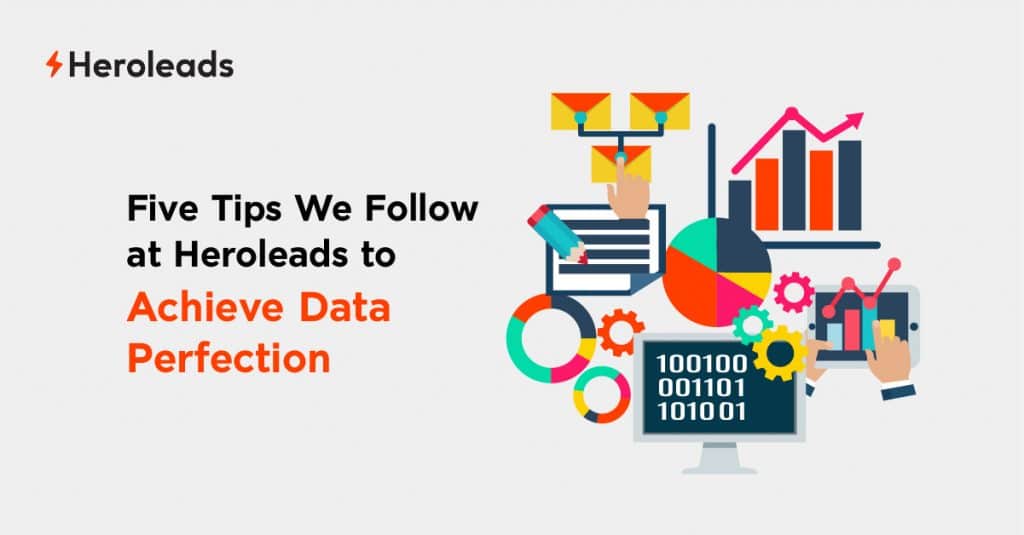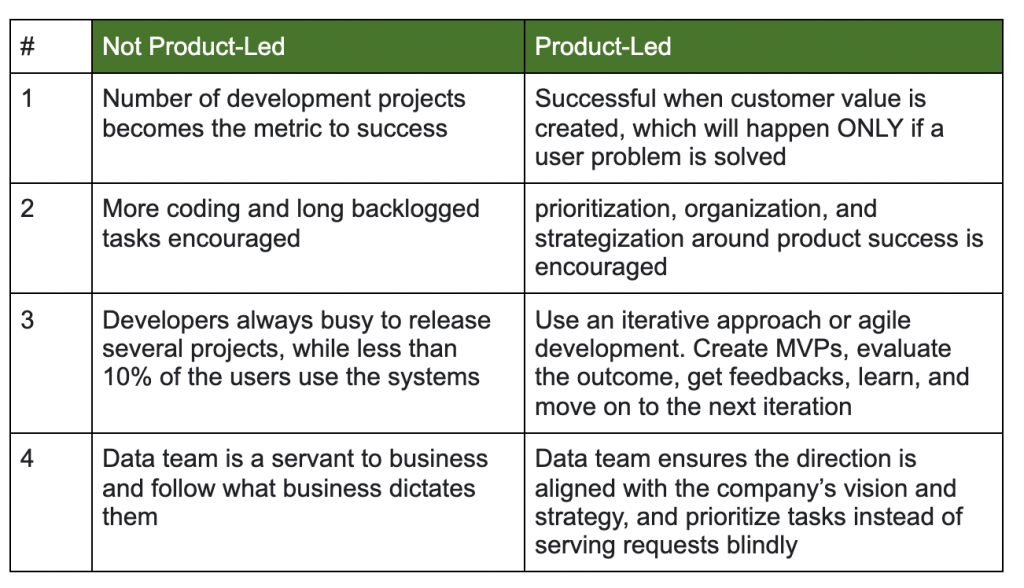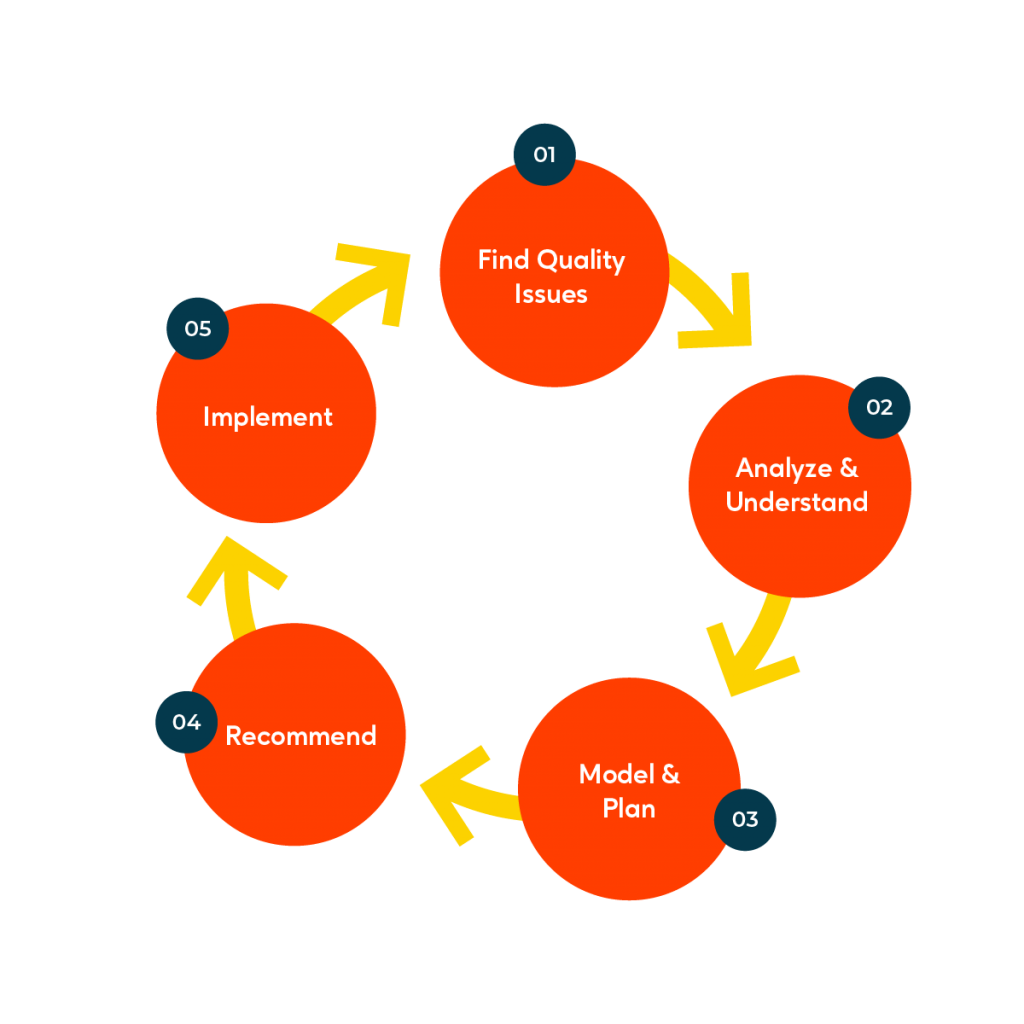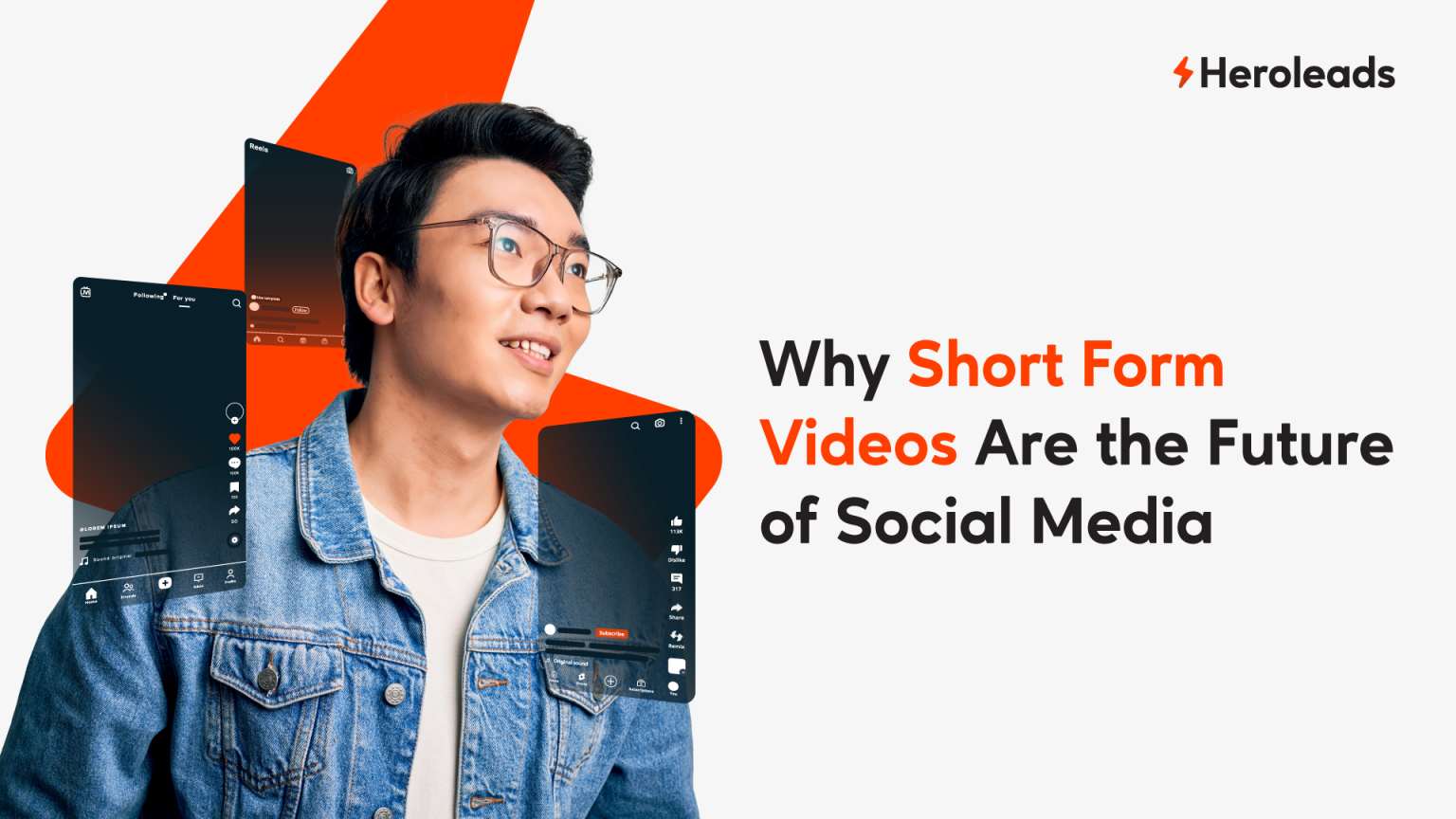Five tips we follow at Heroleads to achieve data perfection for our clients

One of my favorite quotes, since I started my data career in 2015, is Gary Corkin’s famous quotes in 2013:
Companies are drowning in data but starving for insight!
Ever since I heard this quote, I have been asking myself as somebody who is climbing the data career’s ladder, how can I really help clients, and my own company, grow with actionable, valuable, and mind-blowing insights based on data coming from different sources in various formats.
The above question is in fact a million-dollar question for any data-savvy expert. Sometimes answering it takes so much work and complex analysis and sometimes the answer is right in front of us but we won’t see it because we are so busy looking for advanced techniques.
To find the answer to this question is the most helpful way, a data leader should be considering the following tips. Of course, these are not the only considerations, but what I found useful so far.
1- The Journey Starts From the User, Not the Dataset(s)
One of the biggest mistakes I made more than anyone else is pulling the data into my Jupyter Notebook or visualization tool right away and doing random aggregations and manipulations until something pops up that looks like it could be interesting. Although this could work sometimes, it is not obviously the most effective approach.
Nowadays, before providing actionable data to clients, our team in Heroleads tries to first understand the context of the data from a business point of view. The best way will be to have users involved from the beginning until the data product is launched. Therefore, I try to answer the following questions getting help from the users:
- How is this data generated? Is it auto-generated by software or manually input by users, or comes from a third party via API, FTP, or other methods.
- What types of internal (Heroleads growth professionals) and external (our clients) are the main users of this analysis and how can it help them generate revenues, ROI, or – reduce costs, or move faster?
- What is the user’s ideal outcome from this data? Is it a practical use case, and if so, is it feasible considering our data capabilities in hand? At this point as a data expert, it is my responsibility to help the user(s) and myself understand their needs thoroughly.
Once I gather my information I do a quick review of the raw data:
- A quick EDA (Exploratory Data Analysis) to check different tables’ schemas and how different entities are related to each other.
- Based on the EDA, I draw a conceptual data model. This helps me map the requirements against the available raw data.
- I check the needed grain and compare the available grain of the data
Now that we know the requirements and the data capabilities and limitations, we gained a grasp of what is needed and what is feasible.
2- The Magic of Asking WHY:
Usually, tech artisans and developers –including myself– struggle with finding the root cause of how a business process is done in a specific way and how to recommend an improvement.
I came across this simple concept while researching; when you ask children to do something they may simply ask: ”why?” Once you explain to them why they may get back to you with another “why?”. This can happen multiple times until the kid gets convinced. Surprisingly, this is a powerful, yet simple technique to find the root cause of almost any problem. These multiple WHYs are the key to delving deep into the most fundamental reason of a phenomenon. In simple language, if you want to learn the root cause of a problem, all you need to do is to become a child, ask for reasons in an iterative manner, and don’t get settled until you find the actual root cause.
Later I found a technique called Five Why or Iterative Interrogation which has the same problem-solving approach.
Therefore, it is common practice for our data team at Heroleads, as well as our performance optimizers and client success managers, to ask clients deep questions about the value behind the data they expect to see. We don’t just provide data; we focus on the insights which are most closely linked with growth – real business impact. Our Why questions would aim to find the roots of performance and growth drivers based on the user journey and engagement with each client, brand, product, website, and campaign.
The photo below from Kanbalize.com nicely shows an example of a root cause analysis using the “Five whys technique”.
3- Being Product-Led:
When building and delivering data, to internal and external users at Heroleads, and – in order to gain the best insight out of our data, the data team at Heroleads tries to be product-led. Products aim to deliver value based on the business conditions, user experience, and availability of data and technology. According to Melissa Perry in her book “Escaping the Build Trap”:
Product-led companies optimize for their business outcomes, align their product strategy to these goals, and then prioritize the most effective projects that will help develop those products into sustainable drivers of growth.
Melissa Perry claims in “Escaping the Build Trap”, that the optimal way of delivering maximum value and growth to users (clients) is based on product-led, lean mindsets.
The table below helps us retrospect if we are actually product-led or not:
4- Continuous Quality Improvement (CQI):
At Heroleads, we follow CQI methodology for data quality improvement. A full CQI cycle looks like this:
When delivering complex data to internal and external users, we first want to ensure the data quality; start with finding quality issues by talking to users and reviewing the processes. Then we analyze and try to understand the situation. Next, we model the problem and plan for the recommendations. Once the plan is ready, we create our applications, run scripts, and create dashboards to recommend how to improve the case, and finally, we help the company to implement the improvements in different business processes.
Once the full cycle comes to the end, we loop through the cycle over and over and in each iteration, we see improvements and reductions in the number of quality issues.
In order to measure the improvements by end of each iteration and along the way, we have regular sessions with the process improvement team to share the learnings and progress. These kinds of team meetings are sometimes called BICC (business intelligence competency center), where both business and data/BI teams sync on different processes.
5- The Power of Persuasion:
After developing several in-house technologies in Heroleads, as well as advanced data pipelines & modeling systems, we learned that developing any solution, especially data products, requires us to be able to sell them to our users. We always begin with an end in mind and focus on the value for the end-user.
Approaching users to introduce them to a new system or a new dimension of data, can be challenging. Our end-user:
- Might not be as technical as our product, data or the tech team is
- Might be busy with their own tasks, such as running their business, and might not have time to study the data in detail
- Might not immediately see the value of the new system or new data, and how it can maximize their own growth and performance
Therefore, we need to be extremely understanding and flexible. Before presenting an idea to users, we first need to fully listen and learn; understand our clients deeply. We aim to offer our clients an innovative and trusted environment to partner and grow their business as leaders market leaders while being valued for their needs and methods on a deep level.
I personally try to use three guidelines to inspire users to use Heroleads data solutions:
- Try to avoid talking about the technical aspects and how the system is working backstage. Instead, focus on the benefits users can generate from the product – and how it solves their problems and matches their needs. In most cases, the audience is not interested in complex data manipulation techniques, but rather in hearing how it can help them.
- All humans are scared of losing what they have. Why not use it ethically to promote our idea to the user? In Heroleads, we are fully aware of digital transformation challenges. It can be difficult for users to get used to new methods or systems. Therefore, we make sure to focus on the KPIs that matter the most, e.g. how actions and automation based on data can save time, manual efforts, reduce errors, ensure optimal utilization of budgets, and much more. Our data helps our clients grow – stress-free!
- Naturally, human beings follow what they are emotionally invested in. In Heroleads, we make sure to dedicate time to each pitch, sharing the data and expertise – but also building trust and emotional connections based on inspiring growth methods and genuine care for our clients. I recently came across a very interesting sales pitch from the American series Mad Men, in which the presenter tries to trigger a sense of nostalgia in his audience and creates an incredible impact on them at the end of the presentation. He simply arouses his audience’s deep emotions in a way that one of them even cries. You can watch this interesting 5 mins video below:
Conclusion:
The journey and skills required to extract useful and actionable information and insights out of raw data have become a complicated process that requires an extensive amount of craftsmanship and attention to detail. But the real value of the data we provide in Heroleads comes from its strong connections with our user’s needs, and the “problems” they try to solve in order to maximize growth and optimize user experience for their own customers.
Therefore, in Heroleads’ data team, we don’t just move data from a system to our clients, but rather make sure the data setting and delivery is based on optimal performance marketing strategies, understanding each business’ dynamics. Close partnership with our internal and external users is a must. We clearly understand that our clients might not always have the technical teams to manage their data, but what they really need is to win the market based on that data.
Our Heroleads’ data team is dedicated to learning and enhancing our technical knowledge, we use agile methodologies to maximize our efficiency and try to have an iterative approach to solve problems while keeping the users involved in the design process. Our clients have had many successful cases based on data. We believe our close partnership with them will ensure many more opportunities for them to grow further moving forward.
Recent posts





